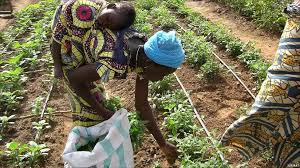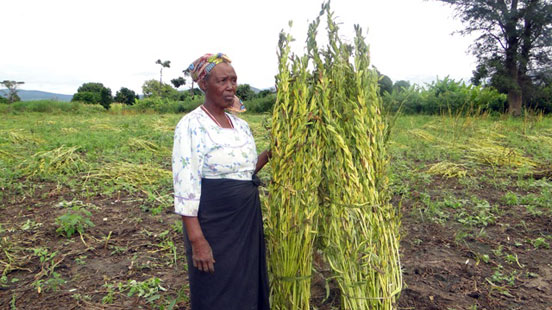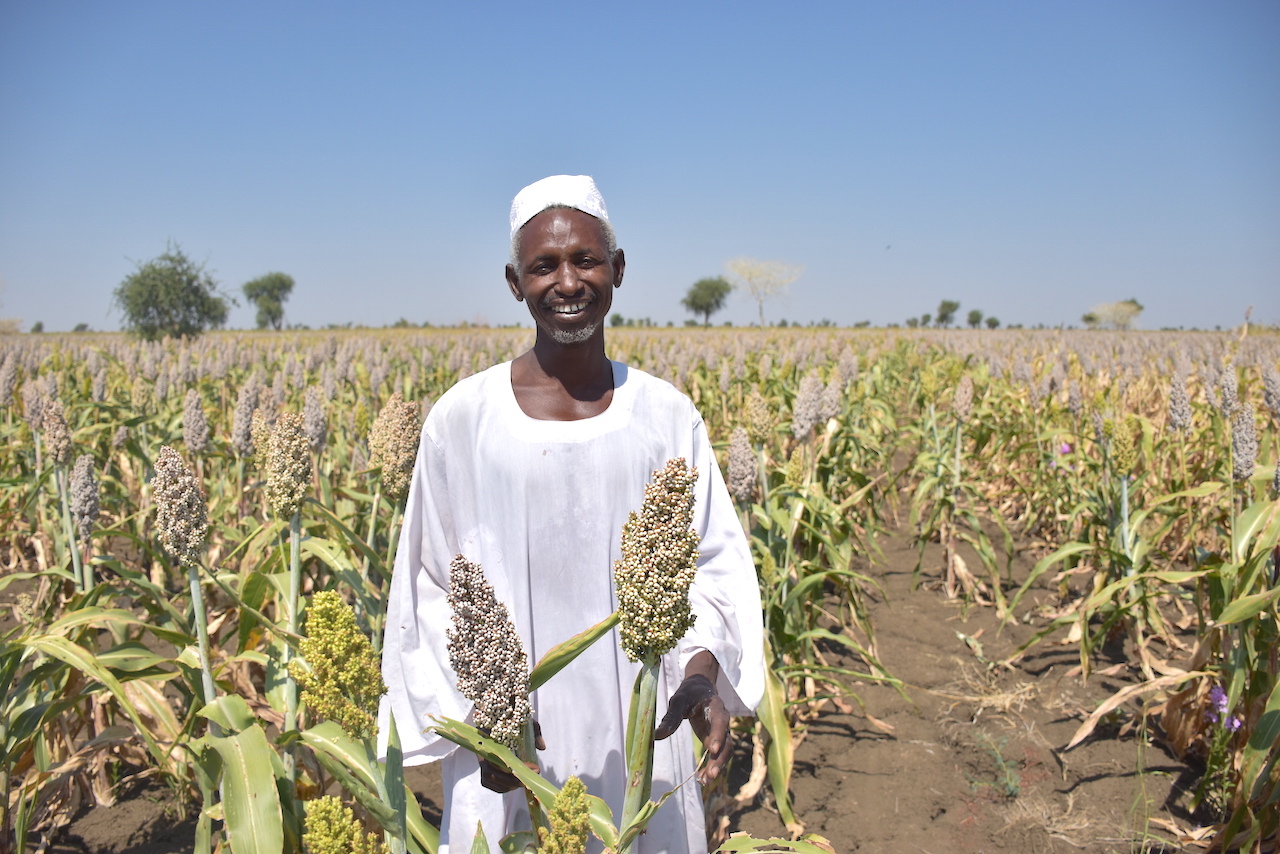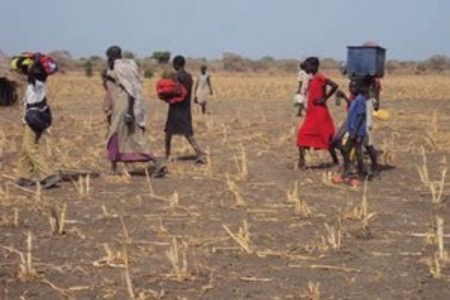“Sustainable development, key to Africa’s Food Supply”
I have visited over twenty-three sub-Saharan African countries since 1970, and just returned from another trip Kenya. Regardless of reports otherwise, food shortages and child malnutrition are still important issues in most of the villages. Sub-Saharan Africa has been noted by experts as “the epicenter of crisis with continuing food insecurity, a rise of extreme poverty, high child and maternal mortality”.
I read with interest, on July 11, 2012, The New York Times Op-Ed by Nicholas Kristof, "Obama's Fantastic Boring Idea". The essence of the article was about agricultural food sourcing in Malawi, which he described during a recent trip. He noted that “USAID has been working with local farmers to promote new crops and methods so that farmers don’t have to worry about starving in the first place”. I commend Kristof for taking the time to visit the villages, and to talk with the farmers. He had previously spent time in other sub-Saharan African countries, seeing firsthand the issues that Africans face to survive in the harsh conditions there.
I served as U.S. Ambassador to Mauritius, Seychelles, and Comoros, three island nations located off the East Coast of Africa from 2002-2005. I had also spent time in a number of countries in East Africa and the Horn of Africa. Food shortages and humanitarian assistance have become the “norm” in some of the countries, since my first visit to Africa in 1970.
The Horn of Africa has a challenging geography, consisting of a series of mountain ranges in the western part and expansive arid and semiarid lowlands in the eastern part extending to the Indian Ocean. In the lowlands, one of the poorest areas of Africa for agriculture, rainfall is scant even during the monsoon season, and the ground is often parched. On the windward side of the mountain ranges in the western region, monsoon rains can be heavy and in many areas the sole source of water. Depending on how much rainfall occurs during the monsoon season, life becomes one of feast or famine for its inhabitants.
Nicholas Kristof noted, “President Obama has made agriculture a focus of his foreign aid programs with mixed results”. He expressed some concerns saying, “At a time when there’s a vigorous political debate in America about foreign aid, outreach to African farmers doesn’t wow Congress or the American people”. Sub-Saharan Africa is a vast area unfamiliar to most Americans. To better understand the critical nature of the region, congressional delegations need to spend time there. Many members of Congress have a myopic view of this faraway continent, and a limited understanding of its importance to our national security. We need a foreign policy which includes more of a focus on agricultural programs in sub-Saharan Africa. Food on the table is the best deterrent for avoiding costly humanitarian aid, which continues to be a critical factor in a number of countries. The U.S. has spent billions of dollars over the past fifty years to prevent starvation with limited success. Food-aid alone is like putting a Band-Aid on a puncture wound. Defeating hunger in sub-Saharan Africa with agricultural mentoring methods to improve production should a priority, if for no other reason than our national security.
The U.S. Agency for International Development (USAID) was established in 1961 to assist in "economic development and humanitarian assistance around the world in support of the foreign policy goals of the United States”. The agency has been very effective in areas such as agriculture, and small business development. Congress however made major budget cuts in the 1990’s, which have dramatically affected USAID programs. At the peak of the Vietnam era there were over 15,000 USAID Foreign Service Officers, which dwindled down to less than 3,000 in the late 1990’s. The number of Foreign Service Officers has been difficult to determine, because many of the programs are now contracted out to third parties. The Obama Administration stated in 2008, that its goal was to double the number of officers at the overseas missions, but reportedly 1,000 are now assigned to Iraq and Afghanistan alone.
The USAID and Peace Corps entities had suffered major budget cuts after the Cold War ended, just as radical Islamist groups and Saudi sponsored NGO’s were on the rise in sub-Saharan Africa. The U.S. agencies had a successful track record working with poverty stricken people in the villages who were very vulnerable. As an example in the Muslim country of Comoros, many fundamentalist preachers finding their way there, and supported by Saudi funded NGO’s spread their radical teachings in the impoverished villages. At the time there were Peace Corps volunteers aided by USAID programs helping to make a difference in the same villages. They helped people find ways to put food on the table and work themselves out of the poverty trap, and onto the road of economic progress. The volunteers had seen progress, and did not want to leave when the Peace Corps program was suspended there in 1999. The Comorian government had on numerous occasions told me how appreciative they were, and wanted the volunteers to return.
Comoros has limited arable land and needs agricultural mentors to help develop sustainable crops. The United States abounds with ingenuity and resources that could be the catalyst to help this country prosper. Such support would give people hope, and combat radical Islam’s influence on the susceptible villagers. In addition, infrastructure such as good road access to arable land is very important. In this poor country, Comorians first have to grow enough food to satisfy their own basic needs, before they can even focus on cash crops for export.
In my meetings with sub-Saharan African leaders, I repeatedly heard that the United States was considered a “fair-weather friend.” We need to change that image, and have a more consistent foreign policy, that includes foreign assistance programs for sustainable economic development. Above all we need rebuild trust and friendship.
Secretary of State Warren Christopher in 1995, appearing before Congress, stated “We should not forget that foreign assistance is a real bargain for American taxpayers ”, and “recent polls suggest that the American people think that up to 25 percent of federal spending goes to foreign assistance, and that 8 percent should be the maximum. In fact, we spend less than 1 percent of the total federal budget on foreign assistance—about 12 cents a day for each American citizen—in contrast to about 18 percent still spent on defense”.
Responding to questions about whether our foreign assistance made any real
difference in developing countries, and what would happen if we just stopped giving it, Secretary Christopher responded, “Both we and they would suffer. Our foreign assistance programs are intended to promote the kind of economic growth and political stability that are critical to U.S. national security and economic well-being. Failing to provide aid to developing countries would therefore jeopardize our national security.” The Secretary pointed out that “it costs a hundred times as much to deal with humanitarian crises as it does to prevent them.” For example, it cost the United States more than $2 billion to deal with Somalia, and $1 billion to address Rwanda’s problems.
When Robert Gates returned to government service in 2006, as secretary of defense, he noted USAID had less than 3,000 employees, down from 16,000 only a few earlier years; that USAID had mainly become a contracting agency. He pointed out that “Congress continues to nitpick at the foreign affairs budget (known as the 150 Account), while defense budgets pass largely untouched”.
Nicholas Kristof noted that the Malawi farmers growing chilies, as an alternative to corn, was a program developed with the help of USAID, and can be replicated elsewhere. Similarly other substitute crops could be planted in the more arid regions, such as the Horn of Africa. Using American ingenuity, sustainable farming methods are possible in a multitude of villages, and the impact would be a thousand-fold.
Since I first visited sub-Saharan Africa in 1970, civil war and strife have caused agricultural and economic catastrophes in a number of countries. In some cases food shortages were caused by agricultural neglect. For most Africans life today is no better. In addition to the poverty issues that exist, we also have to deal with terrorists and other radical Islamic extremists who prey on the poorest of the poor. Poverty’s companions are hopelessness and a susceptibility to reach out to anyone who is willing to help. Islamic extremists are well funded and willing to fill this void of hope for them.
The United States has pumped well over $500 billion in aid into sub-Saharan Africa in the past fifty years, yet nearly three hundred million people continue to live on less than $1 a day. The number of poverty-stricken people in sub-Saharan Africa has doubled from 1981 to 2001. The number is expected to reach 340 million by 2015, with most of the population still living in weak, failing, and failed states.
Without the ingredients of good governance, education, healthcare, and sustainable development it will be difficult for Africans to survive without massive infusions of humanitarian assistance. It is when people have a way to feed themselves and have a little extra money in their pockets that life acquires new meaning. It is only then also that violence and strife tend to become secondary.
The United States needs to more adequately fund USAID and Peace Corps programs. These organizations are well respected worldwide, and have been the source for some of our finest diplomats. It is very important that we also have a meaningful and consistent foreign policy. If the United States fully engages sub-Saharan Africa we will have a greater chance to leave a positive footprint, and guide these countries onto the path of freedom and prosperity, eradicating poverty, reducing the impact of disease, and developing agricultural self-reliance.
 Niger: Farmers increase yield with low pressure drip irrigation (Photo BBC)
Niger: Farmers increase yield with low pressure drip irrigation (Photo BBC)
 Tanzania: Farmer with sesame crop (Photo courtesy of FARM-Africa)
Tanzania: Farmer with sesame crop (Photo courtesy of FARM-Africa)
 Sudan- Blue Nile State: Farmer with sorghum crop (Photo courtesy of Practical Action)
Sudan- Blue Nile State: Farmer with sorghum crop (Photo courtesy of Practical Action)
 South Sudan: Villagers fleeing violence- as farm land lays fallow
South Sudan: Villagers fleeing violence- as farm land lays fallow
Related Articles:
The New York Times
Obama’s Fantastic Boring Idea
By NICHOLAS D. KRISTOF, July 11, 2012
Full Story: http://www.nytimes.com/2012/07/12/opinion/kristof-obamas-fantastic-boring-idea.html
Stripes Central
Gates: "Congress is part of the problem" in State, USAID shortfalls
By Kevin Baron, August 23, 2010
Full Story:http://www.stripes.com/blogs/stripes-central/stripes-central-1.8040/gates-congress-is-part-of-the-problem-in-state-usaid-shortfalls-1.115680